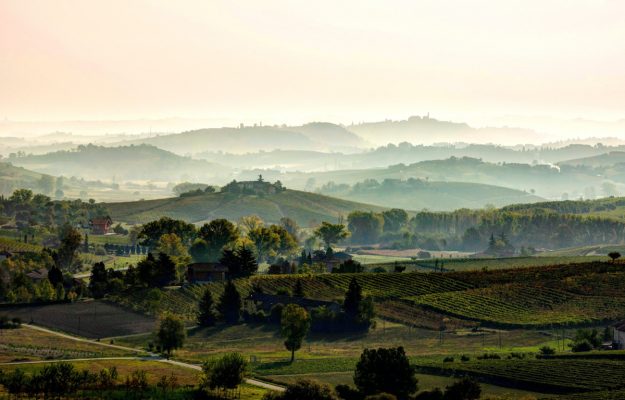The title is Barbera 2.0, and it is indeed the first really big step towards an authentic zoning of one of the most important wine territories in the Piedmont region. This is the project the Barbera d’Asti Consortium launched, together with Wines of Monferrato, lead by Filippo Mobrici, and in collaboration with the Department of Agrarian, Forest and Nutrition Sciences of the University of Turin. It is an enormous project that has enormous numbers. Research for the project started in 2017, and it is oriented to identifying Barbera d’Asti’s special winemaking methods, in its vast areas of cultivation, which count about 5.425 hectares that represent 12% of the entire Piedmont vineyards. It is a very wide extension of land, among 116 Municipalities in the Province of Asti (4.540 hectares) and 51 in the Province of Alessandria (885 hectares). The project will explore the thousand faces of Barbera, Piedmont’s” pop” wine, par excellence, and give them a precise geographic identity, ideally dividing the denomination’s territory into uniform zones. Then, they will be attributed, through a scientific analysis of wines produced, chemical values and sensory profiles that producers, communicators, consumers and wine lovers can easily and securely reference.
The project started with a bottle, but then there were 111 wines to examine - 82 bottles of Barbera d’Asti DOCG and 29 bottles of Barbera d’Asti DOCG Superiore, as well as five blind wine tastings of anonymous bottles. This was the way to elaborate an analysis of all the complexities of Barbera, which changes with each chemical or organoleptic nuance, based on the area of origin, defining the great wealth and versatility of such a characteristic vine.
From the point of view of characterizing winemaking, the relation between sensory profiles of Barbera d’Asti, and its chemical-physical attributes has been able to produce useful data to classify the wines. From the point of view of characterizing the territory, which was done first by dividing the production area into distinct territories of production and similar subclimatic conditions, and consequently, by making micro - vinification of samples from 13 different zones of the same amount of vineyards, which brought about identifying special and distinct characteristics that would favor identifying the denomination on a homogenous basis; each one defined, thanks to the chemical and sensory attributes of the wines produced.
The results, besides delineating an even more precise mapping of the Barbera d’Asti zones, will also open new spaces for improvement and communication in the future. Further, they will support new oenological studies and research of an area and a denomination that is highly appreciated all over the world.
“Research, innovation and knowledge are necessary, not only to optimize cultivations, but also to achieve higher quality”, emphasized Filippo Mobrici, president of Consorzio di Barbera d’Asti and Vini del Monferrato, “this project has been created thanks also to the support from the Piedmont Region and the Cassa di Risparmio of Asti Foundation, which have confirmed their belief in investing in research through the aid of concrete interventions that will help the companies and the productions in the territory. This is the biggest project ever made so far for the Barbera d’Asti world, following the one on native yeasts that resulted in selecting a few high profile ones to be used in our wineries. Protection of the territory and valorizing its heritage come about also through these types of interventions”.
“The Cassa di Risparmio of Asti Foundation has supported the Consorzio’s project, which focused on identifying and valorizing Barbera wine, the symbol and driving force for viniculture and the economy of our territory, in which its companies have contributed to improving its quality and image”, added Mario Sacco, president of the Cassa di Risparmio of Asti Foundation. “The project of identification has taken three years of intense work and it is articulated in two phases, as follows”, explained Vincenzo Gerbi, Professor of Oenology at the University of Turin, “first, there was a survey of Barbera d’Asti DOCG wines on the market, to have a general idea of product recognition; the second phase was that of micro vinification in similar conditions, so as to find out only the territorial characteristics of the origins of the grapes, excluding the intervention of the single company. The results showed high quality and uniformity of the grapes, but different expressive features, which is a sign of the versatility of the vine. This means, then, that it will allow producers more space for commercial planning as well as being able to intercept sectors of markets that will welcome a single expression of wine. As far as the scientific aspect is concerned, we have the possibility of expanding Barbera d’Asti’s data bank, which will be very useful for developing future research”.
Copyright © 2000/2025
Contatti: info@winenews.it
Seguici anche su Twitter: @WineNewsIt
Seguici anche su Facebook: @winenewsit
Questo articolo è tratto dall'archivio di WineNews - Tutti i diritti riservati - Copyright © 2000/2025








































































































































































































